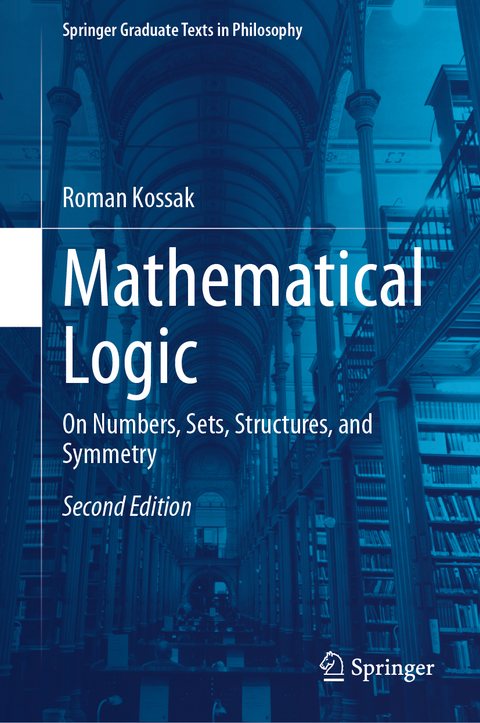
Mathematical Logic
Springer International Publishing (Verlag)
978-3-031-56214-3 (ISBN)
This textbook is a second edition of the successful, Mathematical Logic: On Numbers, Sets, Structures, and Symmetry. It retains the original two parts found in the first edition, while presenting new material in the form of an added third part to the textbook. The textbook offers a slow introduction to mathematical logic, and several basic concepts of model theory, such as first-order definability, types, symmetries, and elementary extensions.
Part I, Logic Sets, and Numbers, shows how mathematical logic is used to develop the number structures of classical mathematics. All necessary concepts are introduced exactly as they would be in a course in mathematical logic; but are accompanied by more extensive introductory remarks and examples to motivate formal developments. The second part, Relations, Structures, Geometry, introduces several basic concepts of model theory, such as first-order definability, types, symmetries, and elementary extensions, and shows how they are usedto study and classify mathematical structures. The added Part III to the book is closer to what one finds in standard introductory mathematical textbooks. Definitions, theorems, and proofs that are introduced are still preceded by remarks that motivate the material, but the exposition is more formal, and includes more advanced topics. The focus is on the notion of countable categoricity, which analyzed in detail using examples from the first two parts of the book. This textbook is suitable for graduate students in mathematical logic and set theory and will also be of interest to mathematicians who know the technical aspects of the subject, but are not familiar with its history and philosophical background.
Roman Kossak is a Professor of Mathematics at the City University of New York. He does research in model theory of formal arithmetic. He has published 38 research papers and co-authored a monograph on the subject for the Oxford Logic Guides series. His other interests include philosophy of mathematics, phenomenology of perception, and interactions between mathematics philosophy and the arts.
Part I: Logic, Sets, and Numbers.- Chapter 1. First-order Logic.- Chapter 2. Logical seeing.- Chapter 3. What is a Number?.- Chapter 4. Seeing the Number Structures.- Chapter 5. Points, Lines, and the Structure of R.- Chapter 6. Set Theory.- Part II: Relations, Structures, Geometry.- Chapter 7. Relations.- Chapter 8. Definable Elements and Constants.- Chapter 9. Minimal and Order-Minimal Structures.- Chapter 10. Geometry of Definable Sets.- Chapter 11. Where Do Structures Come From?.- Chapter 12. Elementary Extensions and Symmetries.- Chapter 13. Tame vs. Wild.- Chapter 14. First-Order Properties.- Chapter 15. Symmetries and Logical Visibility One More Time.- Part III: Inference, Models, Categoricity and Diversity.- Chapter 16. Logical Inference.- Chapter 17. Categoricity.- Chapter 18. Counting Countable Models.- Chapter 19. Infinitary Logics.- Chapter 20. Symmetry and Definability.- Appendices.- Bibliography.- Index.
| Erscheinungsdatum | 20.04.2024 |
|---|---|
| Reihe/Serie | Springer Graduate Texts in Philosophy |
| Zusatzinfo | XVI, 257 p. 29 illus. |
| Verlagsort | Cham |
| Sprache | englisch |
| Maße | 155 x 235 mm |
| Themenwelt | Geisteswissenschaften ► Philosophie |
| Mathematik / Informatik ► Mathematik | |
| Schlagworte | Abstract symmetries • Applied compactness theorem • Axiomatic set theory • compactness theorem • complexity mathematical structures • first-order logic applications • first-order logic introduction • Formal arithmetic • geometry definable sets • language of modern mathematics • Logical visibility • mathematical structure relations • model Theory • Number system development • Ramsey theory • recent developents model theory • Tameness mathematical structures |
| ISBN-10 | 3-031-56214-3 / 3031562143 |
| ISBN-13 | 978-3-031-56214-3 / 9783031562143 |
| Zustand | Neuware |
| Informationen gemäß Produktsicherheitsverordnung (GPSR) | |
| Haben Sie eine Frage zum Produkt? |
aus dem Bereich


